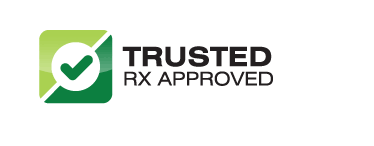Betaxolol ophthalmic
What is betaxolol ophthalmic?
Betaxolol is a beta-blocker that reduces pressure inside the eye.
Betaxolol ophthalmic (for the eyes) is used to treat open-angle glaucoma and other causes of high pressure inside the eye.
Betaxolol ophthalmic may also be used for purposes not listed in this medication guide.
Warnings
You should not use betaxolol ophthalmic if you have a serious heart condition or slow heartbeats.
Before taking this medicine
You should not use this medicine if you are allergic to betaxolol, or if you have:
- a serious heart condition such as "sick sinus syndrome" or "AV block" (2nd or 3rd degree);
- severe heart failure; or
- a history of slow heartbeats that have caused you to faint.
To make sure betaxolol ophthalmic is safe for you, tell your doctor if you have:
- asthma, severe chronic obstructive pulmonary disease (COPD);
- a history of heart disease or congestive heart failure;
- diabetes;
- a thyroid disorder;
- a history of severe allergies;
- blood circulation problems or peripheral vascular disease such as Raynaud's syndrome;
- a muscle disorder such as myasthenia gravis; or
- a condition for which you take another beta-blocker medicine.
- It is not known whether this medicine will harm an unborn baby. Tell your doctor if you are pregnant or plan to become pregnant.
- It is not known whether betaxolol ophthalmic passes into breast milk or if it could harm a nursing baby. Tell your doctor if you are breast-feeding a baby.
How should I use betaxolol ophthalmic?
Follow all directions on your prescription label. Do not use betaxolol ophthalmic in larger or smaller amounts or for longer than recommended.
The usual dose of this medicine is 1 drop into the affected eye 2 times per day. Follow your doctor's dosing instructions very carefully.
Shake the eyedrops well just before using them.
Do not use this medicine while wearing contact lenses. Betaxolol ophthalmic may contain a preservative that can discolor soft contact lenses. Wait at least 15 minutes after using this medicine before putting in your contact lenses.
Wash your hands before using the eye drops.
To apply the eye drops:
Tilt your head back slightly and pull down your lower eyelid to create a small pocket. Hold the dropper above the eye with the tip down. Look up and away from the dropper and squeeze out a drop.
Close your eyes for 2 or 3 minutes with your head tipped down, without blinking or squinting. Gently press your finger to the inside corner of the eye for about 1 minute, to keep the liquid from draining into your tear duct.
Use only the number of drops your doctor has prescribed. If you use more than one drop, wait about 5 minutes between drops.
Wait at least 10 minutes before using any other eye drops your doctor has prescribed.
Do not touch the tip of the eye dropper or place it directly on your eye. A contaminated dropper can infect your eye, which could lead to serious vision problems.
Do not use the eye drops if the liquid has changed colors or has particles in it. Call your pharmacist for new medicine.
Tell your doctor right away if you have any eye injury or eye infection.
If you need surgery, including eye surgery, tell the surgeon ahead of time that you are using betaxolol ophthalmic. You may need to stop using the medicine for a short time.
Store in an upright position at room temperature, away from moisture and heat. Do not freeze. Keep the bottle tightly closed when not in use.
What should I avoid while using betaxolol ophthalmic?
Betaxolol ophthalmic can cause blurred vision. Be careful if you drive or do anything that requires you to be able to see clearly.
Do not use other eye medications unless your doctor tells you to.
Betaxolol ophthalmic side effects
Get emergency medical help if you have signs of an allergic reaction: hives; difficult breathing; swelling of your face, lips, tongue, or throat.
Although the risk of serious side effects is low when betaxolol ophthalmic is used in the eyes, side effects can occur if the medicine is absorbed into your bloodstream.
Stop using betaxolol ophthalmic and call your doctor at once if you have:
- bronchospasm (wheezing, chest tightness, trouble breathing);
- feeling short of breath while lying down;
- chest pain, cough with foamy mucus;
- swelling, rapid weight gain;
- drooping eyelids; or
- muscle weakness in your arms or legs.
Common side effects may include:
- eye irritation;
- itchy or watery eyes;
- blurred vision;
- feeling like something is in your eye; or
- increased sensitivity to light.
What other drugs will affect betaxolol ophthalmic?
Tell your doctor about all your current medicines and any you start or stop using, especially:
- oral betaxolol (Blocadren);
- insulin or diabetes medications you take by mouth;
- any other beta-blocker--atenolol, carvedilol, labetalol, metoprolol, propranolol, sotalol, and others;
- a calcium channel blocker--amlodipine, diltiazem, felodipine, nicardipine, nifedipine, verapamil, and others;
- medicine to treat a psychiatric disorder--chlorpromazine, haloperidol, thioridazine; or
- heart or blood pressure medicine--amiodarone, digoxin, reserpine, and others.
This list is not complete. Other drugs may interact with betaxolol ophthalmic, including prescription and over-the-counter medicines, vitamins, and herbal products. Not all possible interactions are listed in this medication guide.





